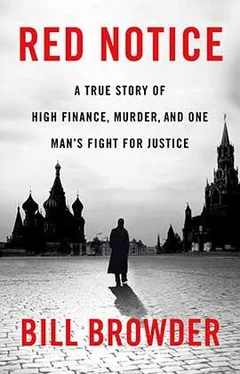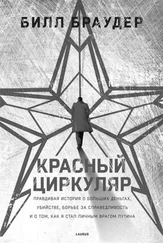While these tactics were aggressive and crude, they confirmed that our legislation had touched a nerve. I wasn’t the only one who recognized this. Many other victims of human rights abuses in Russia saw the same thing. After the bill was introduced they came to Washington or wrote letters to the Magnitsky Act’s cosponsors with the same basic message: «You have found the Achilles’ heel of the Putin regime». Then, one by one, they would ask, «Can you add the people who killed my brother to the Magnitsky Act?» «Can you add the people who tortured my mother?» «How about the people who kidnapped my husband?» And on and on.
The senators quickly realized that they’d stumbled onto something much bigger than one horrific case. They had inadvertently discovered a new method for fighting human rights abuses in authoritarian regimes in the twenty-first century: targeted visa sanctions and asset freezes.
After a dozen or so of these visits and letters, Senator Cardin and his cosponsors conferred and decided to expand the law, adding sixty-five words to the Magnitsky Act. Those new words said that in addition to sanctioning Sergei’s tormentors, the Magnitsky Act would sanction all other gross human rights abusers in Russia. With those extra sixty-five words, my personal fight for justice had become everyone’s fight.
The revised bill was officially introduced on May 19, 2011, less than a month after we posted the Olga Stepanova YouTube video. Following its introduction, a small army of Russian activists descended on Capitol Hill, pushing for the bill’s passage. They pressed every senator who would talk to them to sign on. There was Garry Kasparov, the famous chess grand master and human rights activist; there was Alexei Navalny, the most popular Russian opposition leader; and there was Evgenia Chirikova, a well-known Russian environmental activist. I didn’t have to recruit any of these people. They just showed up by themselves.
This uncoordinated initiative worked beautifully. The number of Senate cosponsors grew quickly, with three or four new senators signing on every month. It was an easy sell. There wasn’t a pro-Russian-torture-and-murder lobby in Washington to oppose it. No senator, whether the most liberal Democrat or the most conservative Republican, would lose a single vote for banning Russian torturers and murderers from coming to America.
The Magnitsky Act was gathering so much momentum that it appeared it might be unstoppable. From the day that Kyle Scott at the State Department stonewalled me, I knew that the administration was dead set against this, but now they were in a tough spot. If they openly opposed the law, it would look as if they were siding with the Russians. However, if they publicly supported it, it would threaten Obama’s «reset» with Russia.
They needed to come up with some other solution.
On July 20, 2011, the State Department showed its cards. They sent a memo to the Senate entitled «Administration Comments on S.1039 Sergei Magnitsky Rule of Law». Though not meant to be made public, within a day it was leaked.
I got a copy and nervously skimmed the document. It was the height of Washington hypocrisy. The State Department’s main argument was that the sanctions proposed by the Magnitsky Act already existed under executive powers, so why bother passing a new law?
In an effort to be clever, it threw the senators a bone. It said that the other main reason the Senate shouldn’t support the law was that the people who killed Magnitsky had already been banned from entering the United States. Therefore, the law was unnecessary.
I wasn’t sure whether this was a positive development. I called Kyle Parker to see what he thought.
«We don’t understand it either, Bill. Cardin had me call the Department to see who was on the visa sanctions list, and they wouldn’t tell me».
«Did they at least tell you how many people were on it?»
«Nope. They wouldn’t tell me that either».
«What about asset freezes?»
«They were pretty clear on that one. They don’t support asset freezes».
«So what’s Cardin’s reaction?»
«It’s pretty straightforward. We’re not going along with this and he’ll continue to push for the law».
On August 8, 2011, Cardin publicly rejected the administration’s position and reconfirmed his commitment to passing the Magnitsky Act in a strongly worded Washington Post op-ed entitled «Accountability for Sergei Magnitsky’s Killers». This was an important signal of his resolve, since Obama and Cardin were in the same party. He was publicly throwing down the gauntlet to the president.
When the administration read Cardin’s op-ed, it seemed to become even more agitated. The White House was so afraid of offending the Russians and derailing the «reset» that it contacted Cardin and the other cosponsors and suggested that the bill should apply globally, not just to Russia.
The senators loved that idea. What started out as a bill about Sergei had morphed into a historic piece of global human rights legislation.
After this, Cardin concentrated on bringing the bill before a full vote in the Senate. To do that, one last hurdle had to be cleared: the Senate Foreign Relations Committee. All bills have to be passed by a Senate committee before they can come to a vote in the full Senate, and since the Magnitsky Act involved visa bans, it had to go through the Foreign Relations Committee. Since the bill had so much support generally, and there was no Senate opposition, this seemed like a simple formality.
Cardin requested that the committee chair, Senator John Kerry, add it to the agenda for the committee’s next business meeting on September 9. For some reason, Kerry refused. Cardin made the same request for the October 12 meeting, but once again Kerry didn’t bring it to the table. It wasn’t clear what Kerry’s problem was, but there seemed to be one.
Meanwhile, we received some macabre information from Moscow. Sergei’s mother, Natalia, had finally been granted access to information from Sergei’s autopsy report. Among the documents she was allowed to copy were six color photos taken of Sergei’s body shortly after he died. While they were not a surprise, they showed deep bruising along his legs and hands, as well as deep cuts in his wrists — the same injuries that Natalia had seen when she went to view her son’s body in the morgue. She was also able to copy a protocol, signed by the head of Matrosskaya Tishina, authorizing the use of rubber batons on Sergei by riot guards on the night of November 16.
What we knew — that Sergei had died violently at the hands of the state — was now undeniable and backed up by documentary evidence.
After seeing these photos and documents, Natalia filed a new complaint requesting that the Russian authorities open a murder investigation. Like everything else we tried to do in Russia, it was denied.
When I spoke with her on the phone, the only consolation I could offer her was that we were getting close to some form of justice in the United States. I promised that I was doing everything I could, and although prohibiting travel and freezing accounts in America were hardly commensurate punishments for what these people had done to Sergei, it was better than total impunity, which is what we had so far.
On November 29, 2011, the Senate Foreign Relations Committee convened its next business meeting. When the agenda went up on the committee’s website that day, I clicked on the link hoping to see Sergei’s name. I scrolled down. The first item was «A resolution calling for the protection of the Mekong River Basin».
I scrolled a little further and saw its next order of business: «A resolution expressing the sense of the Senate regarding Tunisia’s peaceful Jasmine Revolution».
Читать дальше












